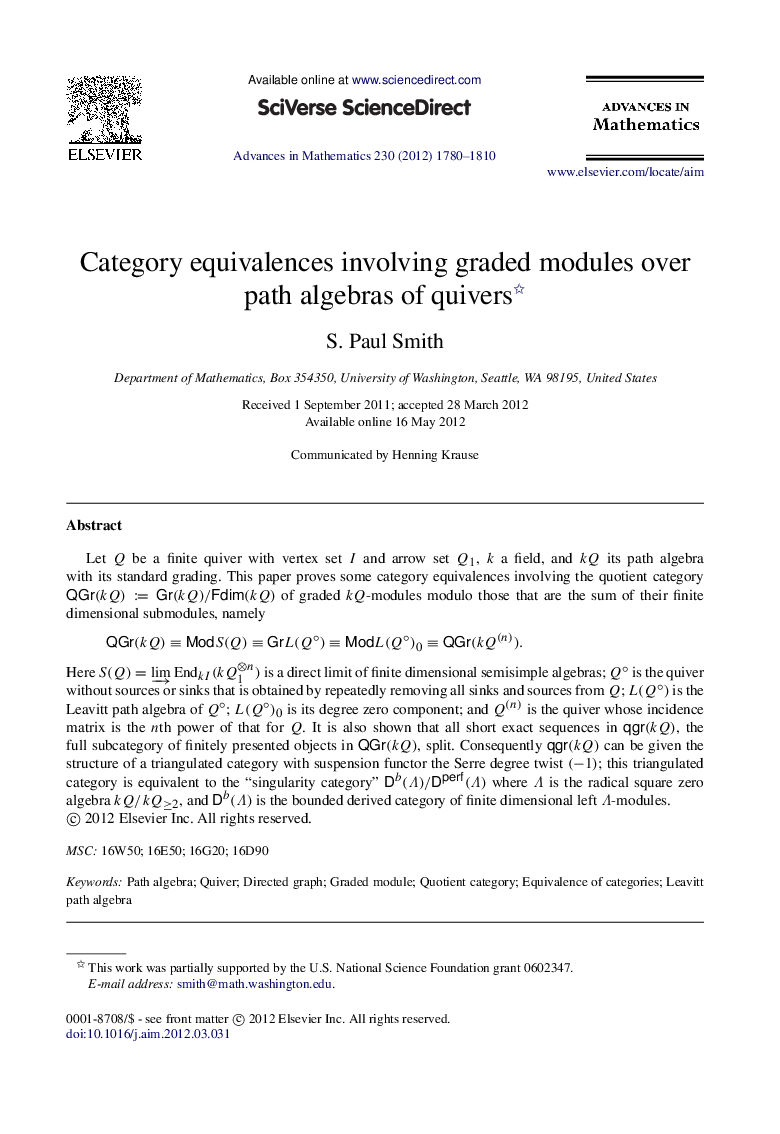| Article ID | Journal | Published Year | Pages | File Type |
|---|---|---|---|---|
| 4666312 | Advances in Mathematics | 2012 | 31 Pages |
Let QQ be a finite quiver with vertex set II and arrow set Q1Q1, kk a field, and kQkQ its path algebra with its standard grading. This paper proves some category equivalences involving the quotient category QGr(kQ)≔Gr(kQ)/Fdim(kQ) of graded kQkQ-modules modulo those that are the sum of their finite dimensional submodules, namely QGr(kQ)≡ModS(Q)≡GrL(Q∘)≡ModL(Q∘)0≡QGr(kQ(n)). Here S(Q)=lim⟶EndkI(kQ1⊗n) is a direct limit of finite dimensional semisimple algebras; Q∘Q∘ is the quiver without sources or sinks that is obtained by repeatedly removing all sinks and sources from QQ; L(Q∘)L(Q∘) is the Leavitt path algebra of Q∘Q∘; L(Q∘)0L(Q∘)0 is its degree zero component; and Q(n)Q(n) is the quiver whose incidence matrix is the nnth power of that for QQ. It is also shown that all short exact sequences in qgr(kQ), the full subcategory of finitely presented objects in QGr(kQ), split. Consequently qgr(kQ) can be given the structure of a triangulated category with suspension functor the Serre degree twist (−1)(−1); this triangulated category is equivalent to the “singularity category” Db(Λ)/Dperf(Λ) where ΛΛ is the radical square zero algebra kQ/kQ≥2kQ/kQ≥2, and Db(Λ) is the bounded derived category of finite dimensional left ΛΛ-modules.
